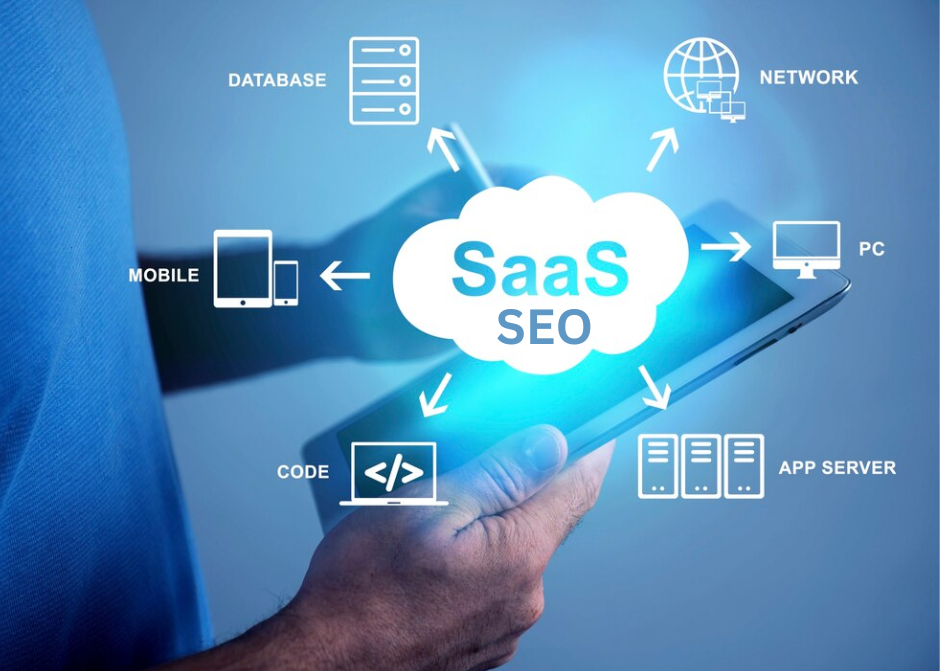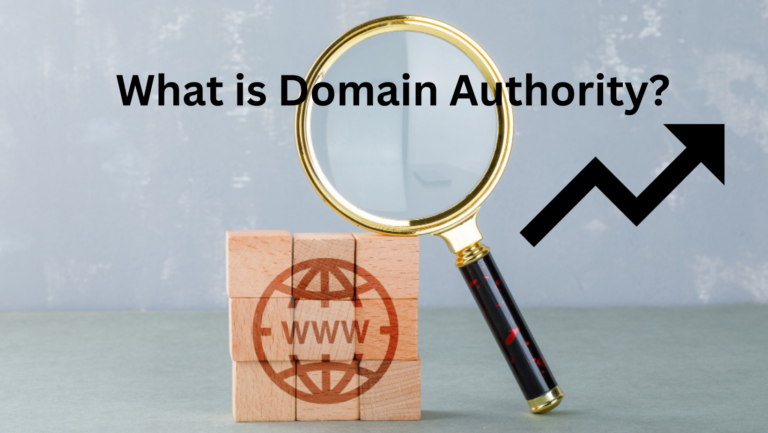SEO for SaaS: A Strategy to Drive Real Growth
SaaS companies want more than just being seen—they aim for lasting growth. Among all the ways to achieve this, one stands out: SaaS SEO. This blog will explore SaaS SEO in simple terms, breaking down why it’s crucial, its core ideas, and practical ways to grow better.
In looking at the success of top SaaS companies, it’s obvious that their SEO strategy for 2024 is the main reason for their growth. But knowing how to build the right SaaS SEO strategy, where to focus, and finding ways to reach your audience matters.
In this guide, we’ll cover what SaaS SEO means, why it matters, and tips to improve your own SaaS strategy.
What Is SaaS SEO?
SaaS, short for “Software as a Service,” refers to software hosted in the cloud, accessed via the internet rather than installed on individual devices. SaaS SEO involves optimizing these cloud-based software solutions for better visibility and ranking on search engines. It focuses on enhancing the online presence of SaaS products so that when people search for software solutions or specific services, these offerings appear prominently in search results. Essentially, SaaS SEO involves tailoring digital strategies to boost the discoverability and accessibility of subscription-based software services online. It’s about making these SaaS solutions more visible and appealing to potential users searching for software options on the web.
Imagine SaaS as a virtual store for software. Instead of buying CDs or downloading software onto your computer, you access it online, like streaming a movie on Netflix or listening to music on Spotify. Now, SaaS SEO is like making sure this virtual store stands out in a bustling market.
When people search for software or services online—maybe they need project management tools or accounting software—SaaS SEO helps those SaaS products appear higher in search results. It’s about tweaking websites and content to catch the eye of someone looking for these solutions online. So, SaaS SEO is all about making sure these online software services get noticed by the right people, helping users find the tools they need more easily.
Here are some key pointers about SaaS SEO:
1. Online Software Access: SaaS, or Software as a Service, refers to software hosted in the cloud, accessible via the internet. Instead of installing programs on your computer, you use them through a web browser, just like logging into your email account.
2. Cloud-Based Solutions: SaaS products live in the cloud, meaning the software’s infrastructure is maintained off-site by the provider. Users can access these tools from any internet-connected device, enabling flexibility and accessibility.
3. SEO for Software Visibility: SaaS SEO involves optimizing the online presence of these cloud-based software solutions. It focuses on tweaking websites, content, and other digital strategies to ensure higher visibility on search engines like Google. The goal is to make these SaaS products more discoverable when users search for relevant services or software online.
4. Enhanced Discoverability: By implementing SEO strategies, SaaS companies aim to improve their products’ rankings in search engine results. This higher visibility ensures that when potential users search for software solutions, these SaaS offerings appear prominently, increasing the likelihood of being chosen.
5. Tailored Digital Strategies: SaaS SEO involves creating and implementing customized strategies specific to cloud-based software services. It encompasses optimizing website content, using relevant keywords, improving user experience, and leveraging various digital marketing tactics tailored to SaaS products.
6. Targeted Marketing: SaaS SEO helps SaaS companies reach their target audience effectively. It ensures that when individuals search for software or services related to a particular niche, the SaaS products optimized for those searches are readily visible and accessible.
7. Standing Out in a Crowded Market: In a competitive online software market, SaaS SEO assists these products in standing out. By optimizing visibility and accessibility, SaaS companies can differentiate their offerings, attracting more users in a crowded digital space.
Although SaaS SEO might have its nuances, the core ranking factors set by Google apply universally across businesses. It’s crucial to recognize that these key factors:
- website relevance
- quality content
- Backlinks
- user experience
These aspects matter regardless of the industry or business type. While the strategies may vary slightly for SaaS products, focusing on these fundamental elements remains paramount for achieving better rankings in search engines. Understanding these shared principles helps in crafting effective SEO strategies, ensuring visibility and relevance across diverse business landscapes.
The Importance of SEO for SaaS
SEO is crucial for SaaS (Software as a Service) because it’s like putting up signs for a virtual store in a busy online neighborhood. When people search for software solutions or services on the internet, good SEO ensures that these SaaS products show up high on the list. It’s like making sure your shop is visible on a crowded street so that people can find it easily. With effective SEO, SaaS companies can attract more users, increase visibility, and stand out in the competitive online market, ultimately driving more traffic and potential customers to their software solutions.
With effective SEO strategies, SaaS products can rank higher in search results when users look for similar services. This visibility boost means more people discover and click on these software offerings. Improved visibility not only attracts potential customers but also builds trust and credibility. By being among the top search results, SaaS companies signal reliability, encouraging users to explore their solutions. In essence, SEO acts as a virtual magnet, drawing in interested users and converting searches into valuable leads or customers for SaaS businesses.
SEO has significant potential in various facets of business growth:
Scaling Growth Exponentially
SEO, when executed effectively, expands a company’s online presence, driving organic traffic and visibility. Higher rankings in search engine results pages (SERPs) can significantly amplify brand exposure, reaching a wider audience and potentially accelerating growth.
- Enhanced Visibility: SEO involves optimizing your website to rank higher in search engine results. Higher rankings mean more visibility to potential customers actively seeking solutions or information related to your offerings.
- Increased Organic Traffic: Ranking prominently in SERPs drives organic traffic. This traffic comprises users genuinely interested in your products or services, potentially resulting in higher conversion rates.
- Expanded Market Reach: Effective SEO strategies transcend geographical barriers, enabling your business to reach global audiences. This expanded reach opens doors to new markets and customer segments.
Reducing Cost-Per-Acquisition (CPA)
A well-optimized SEO strategy can lead to a decrease in the cost of acquiring customers. Organically attracting users actively seeking specific products or services, companies can diminish reliance on paid advertising, thereby reducing the overall cost per acquisition.
- Targeted Traffic: SEO targets users actively searching for specific solutions or information. By attracting these users organically, companies can reduce their reliance on paid ads, thereby diminishing CPA.
- Long-term Investment: Unlike paid advertising, where costs continue to accrue, SEO efforts persistently generate organic traffic without additional direct costs. Over time, this sustainable traffic reduces the overall CPA.
- Enhanced ROI: While initial investments in SEO strategies might require time and resources, the returns are cumulative and often exceed those of paid advertising in the long run.
Converting Customers from Other Channels
SEO acts as a magnet, pulling in potential customers who may have initially engaged through other channels. A strong online presence, bolstered by SEO strategies, can capture the attention of users across various touchpoints, ultimately converting them into paying customers.
- Comprehensive Online Presence: SEO augments a company’s online visibility across multiple touchpoints. Users who initially engage through social media, referrals, or other channels might later convert through organic search due to brand familiarity and credibility established via SEO.
- Cohesive User Experience: A well-optimized website, bolstered by SEO practices, provides a seamless user experience. This consistency across channels encourages user trust and facilitates conversions.
- Content Relevance: SEO-driven content addresses user queries effectively. When users find valuable and relevant content organically, it establishes trust, potentially prompting them to convert.
SEO isn’t just about visibility—it’s a powerful tool that not only scales growth and reduces acquisition costs but also synergizes with other marketing efforts, optimizing the customer journey and driving conversions.
SaaS SEO: Identifying Users and Their Problems
In SaaS SEO, knowing who your users are and what issues they’re trying to solve is super important. It’s like understanding who shops at your store and what they’re looking for. When creating content and using specific words on your website, it’s all about making sure it matches what users are searching for. This helps grab their attention and makes them more likely to choose your software solution. So, figuring out your users and what they need is the secret sauce for making your SaaS product stand out online!
By digging into who your users are and what they need, SaaS companies can tailor their online content to match those needs. It’s akin to knowing your customers’ preferences in a physical store—the more you understand, the better you can cater to them. In the digital realm, this understanding translates into using specific words and phrases (keywords) that users often search for. When your website aligns with what users seek, it’s more likely to show up in their search results. This alignment isn’t just about appearing in searches; it’s about connecting with users who are genuinely interested in what your SaaS solution offers. So, by focusing on understanding your audience and their problems, SaaS companies can craft content that resonates, engages, and ultimately converts potential users into loyal customers.
Optimizing Throughout the Funnel: Insights into SaaS Keyword Tactics
In SaaS SEO, choosing the right words for each step of the customer journey is key. It’s like using different words when talking to someone who’s just learning about your product versus someone ready to buy. By picking specific keywords that match what users are looking for at different stages of buying—like when they’re just learning about the product, thinking about it, or ready to make a decision—SaaS companies can better meet their needs. This smart keyword strategy helps SaaS products connect with users throughout their buying process, making sure they find what they’re looking for at every step. It is advised to try to find low competition keywords that have high search volume for better results in traffic
When we talk about optimizing across the funnel in SaaS SEO, it’s essentially about speaking the right language at the right time. Picture this: someone just exploring software options might search for general terms or questions. At this awareness stage, SaaS companies need to use keywords that match these exploratory searches, drawing these users in.
Moving along the funnel, users get more specific as they consider various options. Here, using keywords that align with their narrowed-down searches is crucial. It’s like guiding someone through a store to find the exact product they want.
Finally, when users are ready to decide, they’re looking for specifics—maybe comparing features or prices. Tailoring keywords to match these specific searches helps SaaS companies stand out and sway users towards their solution.
So, by aligning keyword strategies with these different stages of the buying process, SaaS companies cover all bases, ensuring they’re visible and appealing to potential users no matter where they are in their decision-making journey.
Top of the Funnel Keywords for SaaS:
This stage targets users who are exploring and learning about software solutions. They’re typically searching with broader terms related to their industry or the challenges they face. SaaS companies can attract attention by using keywords that provide educational content or address common pain points. For instance, phrases like “software for project management,” “CRM software benefits,” or “streamlining sales processes” are commonly used to capture these users’ initial interest.
General Exploration: Users are in the discovery phase, seeking information on software solutions.
Broad Search Terms: Focus on industry-related or problem-solving phrases.
Educational Content: Create content addressing common challenges or introducing software benefits.
Examples: Phrases like “software for [industry/need],” “benefits of [specific software type],” or “improving [business process] with software.”
Middle of the Funnel Keywords for SaaS:
Moving deeper into their research, users at this stage have a clearer idea of what they’re looking for. They’re exploring specific features, functionalities, and comparisons among various software options. Keywords here focus on more detailed aspects of software solutions or direct comparisons. Examples include “best CRM with automation features,” “project management tools for remote teams,” or “comparison between [Software A] and [Software B].”
Consideration Stage: Users are narrowing down options and comparing features.
Specific Feature Searches: Focus on functionalities, categories, or comparisons.
In-depth Content: Provide detailed insights or comparisons between software options.
Examples: Terms like “best [specific feature] in software,” “comparison between [Software A] and [Software B],” or “software for [specific business type].
Bottom of the Funnel Keywords for SaaS:
At the final stage, users are ready to make a decision and might be looking for that extra push or specific details. Keywords here are highly specific, targeting users who are comparing pricing, seeking trial versions, or looking for reviews before committing. Phrases like “pricing of [specific software],” “free trial for [software],” or “user reviews for [specific software]” are commonly used to capture these users’ attention and assist in their final decision-making process.
Decision-Making Phase: Users are ready to commit and might seek specific details.
Highly Specific Searches: Focus on pricing, reviews, trials, or specific software details.
Persuasive Content: Provide pricing details, free trials, reviews, or direct calls to action.
Examples: Phrases such as “pricing plans for [specific software],” “free trial of [software],” or “reviews for [specific software].”
By strategically incorporating these different sets of keywords into their content, SaaS companies can effectively guide users through their journey, providing the information and solutions they need at each stage.
Step-by-Step Saas SEO Strategy
1. Keyword Research
In your SaaS journey, it’s key to pinpoint high-intent keywords that align with your product. Look for search terms that directly reflect what your software offers, focusing on user intent. To find these gems, dive into thorough keyword research. Start by understanding your audience—what they’re searching for and how they phrase it. Tools like Google Keyword Planner, SEMrush, or Ahrefs can help uncover these golden keywords. Aim for terms with decent search volume but lower competition. Balancing relevance and competition is vital for your SaaS SEO success, so keep hunting for those low-competition, high-value keywords. You can various Free Keyword Research Tools for the process.
- Understanding User Intent: This involves diving into user behavior analysis to grasp what motivates their searches for SaaS solutions. It entails studying the phrases, questions, and terms that indicate a readiness to make a purchase or engage with SaaS services.
- High-Intent Keywords: Identifying keywords signaling user readiness to engage or buy is crucial. These include terms like “best CRM software,” “top project management tools,” or “pricing for email marketing services.”
- Tools and Analysis: Leveraging keyword research tools is essential. Tools like SEMrush, Ahrefs, or Google Keyword Planner help explore keyword volume, competition, and relevance. Analyzing competitors’ keywords also provides insights into opportunities and trends.
2. On-Page Optimization
On-page optimization involves fine-tuning website elements like content, metadata, and URLs to rank better on search engines and appeal to users. When hunting for low-competition keywords, start by exploring long-tail keywords or specific phrases. Use tools like Google Keyword Planner, Ubersuggest, or SEMrush to discover keywords with decent search volume but lower competition. Look for terms directly related to your niche or product offering. Assess the keyword’s difficulty score; aiming for lower scores signifies less competition. Incorporating these keywords strategically into your on-page content enhances your chances of ranking higher and attracting relevant traffic to your site.
- Meta Tags and Descriptions: Crafting compelling meta titles and descriptions that not only contain targeted keywords but also entice clicks by promising value, solutions, or answers.
- URL Structure: Developing concise and descriptive URLs incorporating relevant keywords, aiming for clarity for both users and search engine crawlers.
- Content Optimization: Integrating targeted keywords naturally into headers, body text, and image alt text while ensuring readability, usability, and user experience are prioritized.
3. Content Creation
Creating content involves crafting useful and informative materials that directly respond to users’ questions or concerns. To find low-competition keywords, start by exploring niche topics or specific queries that aren’t heavily targeted by competitors. Tools like keyword research platforms or SEO analytics can assist in identifying these less competitive terms. Look for phrases that are relevant to your audience but haven’t been extensively covered. By focusing on these overlooked keywords, you can generate content that not only adds value but also increases your chances of ranking higher in search results, boosting visibility for your website or business.
- Problem-Solving Content: Creating content directly addressing user queries or pain points related to SaaS solutions. This includes crafting how-to guides, troubleshooting articles, or comparison pieces.
- Content Diversity: Offering various content formats (blogs, videos, infographics) to cater to different user preferences and maximize engagement and reach.
- Value-Driven Approach: Focusing on delivering valuable, actionable information that positions your SaaS as an authority in the field and a dependable solution provider.
4. Link Building
Link building is a crucial aspect of boosting your website’s credibility. Seeking authoritative sites to link back to your content enhances your site’s trustworthiness in the eyes of search engines. To find low-competition keywords, start by using tools like Google Keyword Planner, SEMrush, or Ahrefs. Look for keywords with decent search volume but less competition. Long-tail keywords, specific phrases, or questions often offer opportunities with lower competition. By incorporating these keywords naturally into your content, you increase your chances of ranking higher in search results while strategically building links to fortify your site’s credibility.
- Quality Link Acquisition: Striving for high-quality backlinks from reputable and relevant websites within the SaaS or tech industry. Prioritizing links from sources with strong domain authority and industry relevance.
- Outreach and Guest Posting: Engaging in strategic outreach to industry influencers, publications, or websites for guest posting opportunities, fostering backlink acquisition from authoritative sources.
- Internal Linking Strategy: Employing internal links to connect relevant pages within your site, facilitating navigation and indicating content hierarchy to search engines.
Read this blog To know about Types of Backlinks
5. Technical SEO
Technical SEO focuses on fine-tuning website elements for better performance. It involves optimizing site structure, ensuring mobile-friendliness, and enhancing loading speed. These improvements help search engines understand and rank your site better. To find low-competition keywords, use tools like Google Keyword Planner or SEMrush. Look for keywords with decent search volume but lower competition. Long-tail keywords or specific phrases related to your niche often have less competition. Analyzing competitor keywords and exploring niche-specific forums or communities can also uncover these hidden, easier-to-rank keywords. Prioritize relevance and user intent while integrating these low-competition keywords into your content for optimal SEO results.
- Website Structure: Organizing your site logically, ensuring clear navigation, and enhancing ease of use for visitors and search engine crawlers.
- Mobile Optimization: Adapting and optimizing the site for mobile devices to provide a seamless user experience across different screen sizes, considering the growing mobile user base.
- Site Speed Optimization: Employing techniques like image compression, code minification, leveraging browser caching, and eliminating unnecessary plugins to enhance page loading speed and user experience.
6. Local SEO
Incorporating Local SEO into your SaaS strategy is vital if you target specific regions. To optimize for local searches, start by researching low-competition keywords relevant to your service in those areas. Use tools like Google’s Keyword Planner or SEMrush to discover these keywords. Focus on location-specific terms, long-tail keywords, and phrases related to your SaaS offering. Look for phrases that have moderate search volume but lower competition. This approach helps your SaaS business rank better in local searches and allows you to tailor your content to meet the needs of regional audiences, boosting visibility and engagement.
- Local Keyword Targeting: Tailoring keywords to include geographic locations if your SaaS caters to specific regions or local markets. This includes terms like “best CRM software in [city],” “top project management tools in [region],” etc.
- Google My Business Optimization: Registering and optimizing your business on Google My Business to enhance visibility in local searches. Ensure accurate contact information, business hours, and customer reviews.
7. Analytics and Tracking
Analyzing your website’s performance metrics is key to fine-tuning strategies. Tracking data helps pinpoint what works and what needs improvement, guiding your optimization efforts. To find low-competition keywords, start by exploring long-tail keywords specific to your niche or industry. Use keyword research tools to gauge their search volume and competition level. Look for phrases or terms that strike a balance—moderate search volume and lower competition. Analyze trends and user intent, aiming for keywords that align with your content and resonate with your target audience. Regularly tracking and refining your keyword choices can boost your SEO strategy’s effectiveness over time.
- Performance Metrics: Utilizing tools like Google Analytics or other SEO monitoring platforms to track key performance indicators (KPIs) such as traffic, conversions, bounce rates, and keyword rankings.
- Refining Strategies: Analyzing data insights to refine and optimize SEO strategies. Identifying high-performing keywords, top-performing content, and areas needing improvement.
8. User Experience Enhancement
Improving User Experience (UX) involves crafting a smooth, captivating journey for users on all platforms. To achieve this, prioritize intuitive navigation, swift loading times, and engaging content. Also, focus on mobile responsiveness for easy access. When seeking low-competition keywords, explore niche topics or long-tail phrases related to your field. Use keyword research tools like Google Keyword Planner or SEMrush to identify terms with decent search volumes but lower competition. These less competitive keywords can bolster your content strategy, helping your site rank higher and attract more visitors seeking specific information or solutions.
- Mobile Responsiveness: Ensuring your website is mobile-friendly and provides an optimized experience across devices. This includes responsive design, fast loading times, and easy navigation.
- Intuitive Design: Focusing on user interface (UI) and user experience (UX) design elements to create a seamless and engaging experience. This involves clear call-to-actions, intuitive site structure, and easy-to-find information.
9. Continuous Iteration
Continual refinement is key: Modify strategies using data insights and market shifts. To spot low-competition keywords, begin by brainstorming topics relevant to your niche. Use tools like Google Keyword Planner, Ubersuggest, or AnswerThePublic to find associated terms. Analyze search volumes and competition levels for these keywords. Aim for long-tail keywords—specific phrases with lower competition and higher relevance—to boost visibility. Monitor their performance and tweak accordingly. Consistent assessment and adaptation based on data ensure your strategies align with market dynamics, allowing you to uncover and target those lucrative, less competitive keywords effectively for improved rankings.
- Adapting Strategies: Using data-driven insights to adapt and evolve SEO strategies based on changing user behaviors, market trends, and search engine algorithm updates.
- Testing and Experimentation: Conducting A/B tests, experimenting with different strategies, and analyzing the results to make informed decisions for ongoing improvements.
Wrap Up
In the realm of Software as a Service (SaaS), having a solid SEO strategy is really important. It’s not just about being visible online; it’s also about engaging users and continuing to grow. When SaaS companies grasp the basics of SEO and put those ideas into action, it becomes a powerful tool for success in the digital world.







